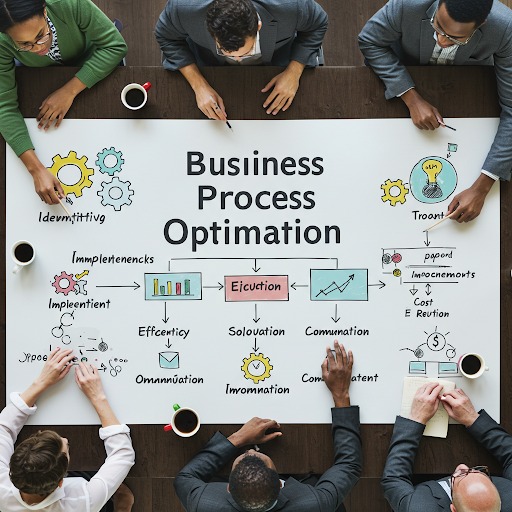Business Process Optimization
Business Process Optimization (BPO) is a methodology that involves analyzing, improving, and streamlining existing business processes to make them more efficient, cost-effective, and aligned with organizational goals. By optimizing business processes, companies can reduce waste, increase productivity, improve service delivery, and enhance customer satisfaction, ultimately boosting profitability and operational performance. Business process optimization can apply to both operational and strategic processes within an organization. The approach focuses on eliminating inefficiencies, minimizing risk, and ensuring that processes are more responsive to changing market demands or customer expectations.

Why Choose Our Cloud Solutions?
We modernize infrastructure, streamline outdated processes, and optimize cloud assets to build future-ready ecosystems.
Technology We Use

AWS

IBM Cloud

Google Cloud

Microsoft Azure
Key Concepts of Business Process Optimization
Business Process
A business process is a set of tasks or activities that are performed in a specific sequence to achieve a particular organizational goal. Processes can be simple or complex and involve various stakeholders, technology, and resources.
Optimization
Optimization refers to the process of making a system or process as effective, efficient, and functional as possible. In the context of business processes, optimization involves identifying bottlenecks, inefficiencies, and areas for improvement, then implementing changes that result in better outcomes.
End-to-End Process View
Optimization requires an end-to-end view of processes. This means understanding how one task or activity influences others, identifying dependencies, and ensuring that all aspects of the process work cohesively. Rather than optimizing in silos, businesses should take a holistic approach.
Continuous Improvement
Business process optimization is often seen as part of a continuous improvement strategy, where processes are periodically reviewed, analyzed, and improved. This can include adopting methodologies like Lean, Six Sigma, or Total Quality Management (TQM) to ensure sustained efficiency.
Types of Business Processes
Core Processes
These are the primary activities that directly contribute to the value that the business delivers to its customers. For example, manufacturing, product development, or service delivery.
Support Processes
These processes facilitate the core processes but do not directly produce value for customers. They provide necessary background functions that keep the business running smoothly.
Management Processes
These processes involve strategic planning, governance, and decision-making activities that guide and control the organization’s operations.
Common Methodologies for Business Process Optimization
Lean
Lean is a methodology that focuses on eliminating waste (non-value-added activities) from processes. The goal is to increase efficiency by reducing unnecessary steps, waiting times, and excessive resource use.
Six Sigma
Six Sigma is a data-driven approach aimed at reducing variation and defects in processes, focusing on achieving near-perfect quality by identifying the root causes of problems and addressing them systematically.
Total Quality Management
TQM is a holistic approach to improving quality across all areas of an organization, not just within a specific process. It encourages employee involvement, customer satisfaction, and a commitment to continuous improvement.
Business Process Reengineering (BPR)
Business Process Reengineering is an approach that involves radically redesigning core business processes to achieve significant improvements in productivity, efficiency, and customer service.
Agile Methodology
Agile is a flexible and iterative approach often applied to software development, but it can also be used in process optimization. Incremental improvements with short development cycles (sprints).
Steps in Business Process Optimization
Define the Process
Identify and clearly define the business process you want to optimize. Document all activities involved and the roles responsible for each step.
Analyze the Process
Use tools like process mapping, flowcharts, and data analysis to identify inefficiencies, bottlenecks, and areas where performance is suboptimal.
Set Goals and KPIs
Establish specific, measurable, achievable, relevant, and time-bound (SMART) goals for the optimization project.
Identify Improvement Opportunities
Determine areas where you can reduce waste, improve speed, lower costs, or enhance quality. Use the chosen optimization methodology (Lean, Six Sigma, etc.) to find specific actions you can take to make improvements.
Continuous Improvement
Optimization is not a one-time event. Establish a continuous improvement culture where processes are regularly reviewed and enhanced.
Conclusion
Business process optimization is essential for organizations looking to stay competitive, improve efficiency, and provide high-quality products and services. By analysing workflows, identifying inefficiencies.
